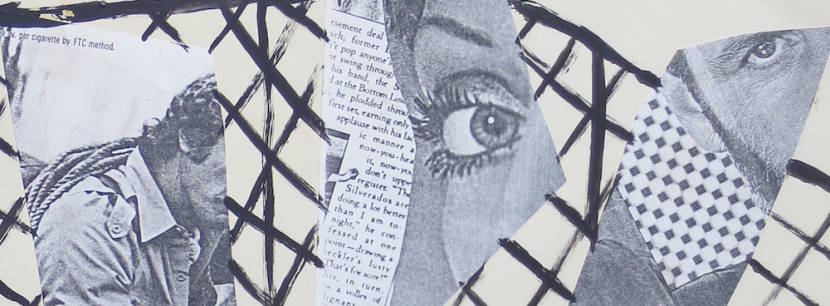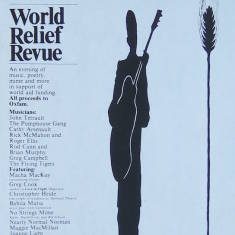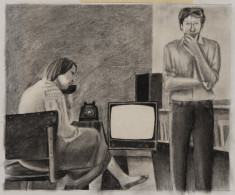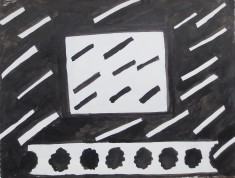Pop Culture & Media
Robert was born in 1956, the year Elvis Presley released Hound Dog, and died in 1992, six months after Tim Berners-Lee introduced www, the public Internet in use today. This was a period when small publishers, campus radio, cable TV and parallel galleries all challenged mainstream media. At Acadia University, Robert hosted a campus radio show, revealing eclectic musical tastes and a love of sharp, witty lyrics. This was also the time of “Live Aid,” when rock musicians used their fame to promote social activism. Robert designed a poster for a local Live Aid event. In art school, Robert experimented with collage and pulled ideas from local news stories. But Robert also witnessed the dark side of pop culture. The Apartment shows a man and woman together in a tiny apartment, each in their self-absorbed worlds, a disconnection amplified by the TV, phone and stereo between them. The Six O’clock News is a portrait of Robert’s parents’ home, where TV acts as a shrine, part of a new religion of entertainment and news. Ghosts shows viewers at the cinema mesmerized by the larger-than-life view of lovers on the screen. Recuperating from cancer treatments, Robert studied classic Hollywood films and used film noir lighting effects in his own work, staging models like actors on the screen. Robert told stories with pictures, a strategy that found full expression in his cancer series. He moved away from his pop culture influences, though one painting, Mountain, quotes Elvis’s rendition of “Lord, you gave me a mountain,” capturing the feeling of monumental challenge confronting an ailing patient.





